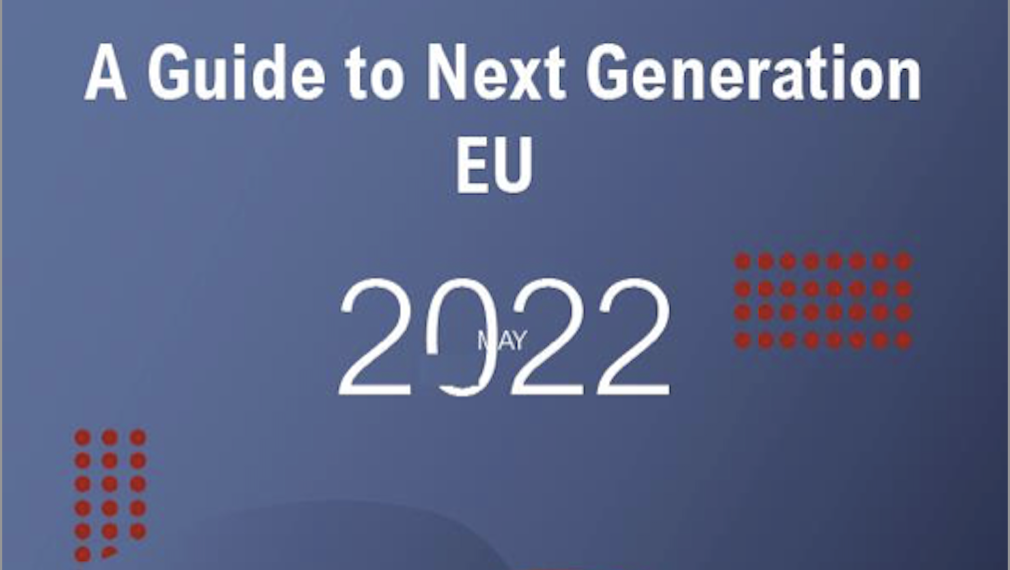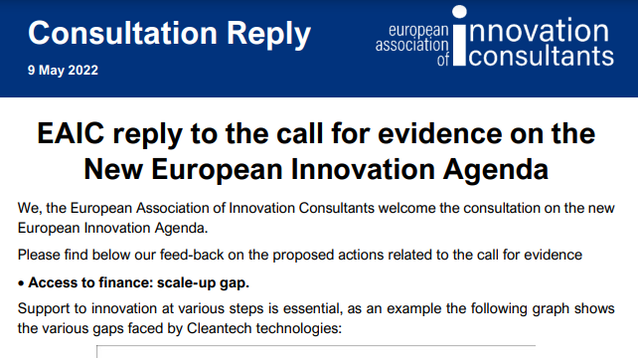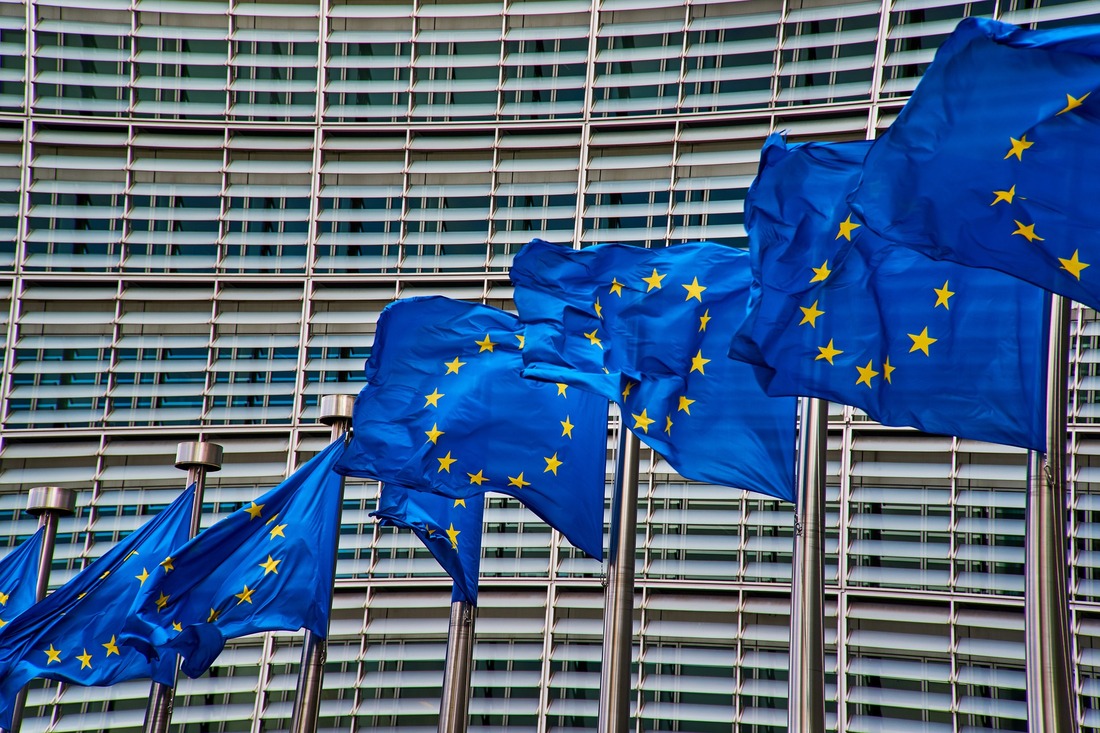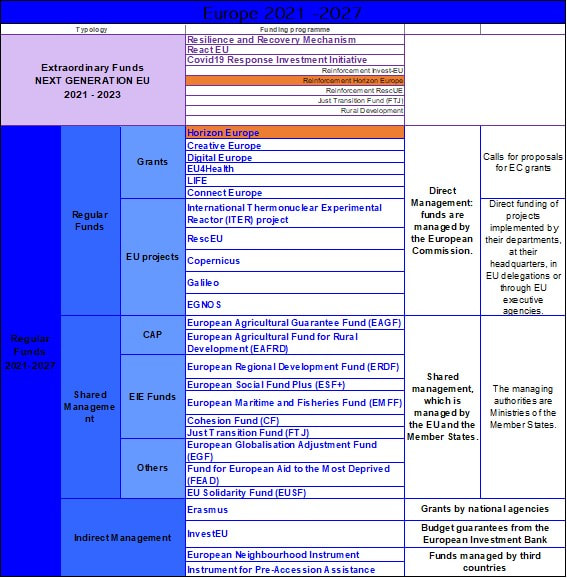News |
|
Today the EAIC releases the second update of its flagship report: “NextGenerationEU Guide, for the industry to better understand and seize its opportunities”. The first edition was released back in July 2021 when the first National Recovery Plans were being adopted by the European Commission.
Novelties of the second update The guide includes a synthesis of the content of each National Recovery Plan, providing details on priorities for reforms and investments to help the recovery. Altogether, the 27 plans represent a total of €723 bn in grants or loans foreseen to be spent or lent over four years. Each country had indicated in their plan the share that will go to Green or Digital recovery, on average 37% and 20% will go respectively to these priorities. The newly updated report includes fresh information on programmes and national calls that are programmed or are ongoing, “This report intends to give transparency on the opportunities that NGEU is offering to SMEs and Industries throughout Europe, showing how effective the EU recovery plan is” said Alex Alvarez, EAIC Board member and coordinator of the report. IPCEI and REPowerEU The guide also makes focus on the international cooperation through the Important Projects of Common European Interest (IPCEI) mechanism that allows member States to provide additional support in view of helping strategic European Value Chains. This mechanism was already used in the Semiconductor or foreseen in Batteries and Hydrogen before the pandemia but the COVID crisis has put stress on Europe’s dependency on foreign technology. This mechanism is welcome as it helps to finance with state aid further collaboration between several countries in research and innovation. 5 areas are covered by IPCEI: Microelectronics, Batteries, Decarbonisation & Hydrogen, Health, and Cloud Services. The new update includes examples of projects that are already being kick-started exactly one year after the launch of the plan. We can highlight a few examples of projects already being funded:
Click here to download the guide Click here to download the Press Release.
0 Comments
On Tuesday 10 May, EAIC submitted its contribution to the European Innovation Agenda call for evidence launched earlier in April by the European Commission.
The EC was seekign feed-back on Five essential action points it identified to improve Europe’s innovation performance:
The EAIC welcomes this initiative, we stress in particular the following:
“Industrial clusters are groups of specialized enterprises, often SMEs, and other related supporting actors in a location that cooperate closely. Together, SMEs can be more innovative, create more jobs, and register more international trademarks and patents than alone. The EU cluster portal provides tools and information on European initiatives, actions and events for clusters and their SMEs to create more world-class clusters across the EU.” Industrial Cluster Policy of the European Commission Since the beginning of the pandemic, European clusters and agents demonstrated their capability to react quickly, better than in China, US and other continents. The role of clusters is crucial in identifying the needs of European industries and where to allocate future investments. For these reasons, clusters will play a key role in how to support the recovery plan for Europe.
Next Generation EU & Horizon Europe: working hand in hand to facilitate the EU’s fast recovery6/10/2021  To amortise the pandemic aftermath in 2020, the European Union provided a stimulus package worth EUR 2 trillion. The package consists of the EU’s long-term budget for 2021 - 2027 of EUR 1.2 trillion, enhanced by NextGenerationEU at a value of EUR 807 billion. This budget is split into two types of fundings: grants and loans, some EUR 338 billion will be provided in the form of grants, while EUR 386 billion will be used to provide loans from the EU to individual Member States with favourable conditions. NextGenerationEU is a European instrument specifically designed to help repair the immediate economic and social damage caused by the coronavirus. Its long-term goal is to make the EU greener, more digital, more resilient and better prepared for the forthcoming challenges. The cornerstone of Next Generation EU is the Recovery and Resilience Facility – an instrument that provides grants and loans to support necessary reforms and investments within EU Member States. The funds from the instrument will be distributed according to national recovery and resilience plans set up by individual member states, in cooperation with the European Commission and in line with an agreed allocation key. The European Association of Innovation Consultants (EAIC) has released its first collective report “A Guide to Next Generation EU for industry to better understand and seize its opportunities.” The guide currently covers 21 countries, however, EAIC intends to regularly update this guide and incorporate new sections to facilitate the identification of opportunities for industry. The purpose of the guide is to help EU industry, present in multiple EU countries, identify the priorities to facilitate the recovery of each member state. Although national plans are usually available in each local language, the guide summarises the plans in English and allows for more transparency. One of the traditional programmes, funded under the multiannual financial framework for the next 7 years, is Horizon Europe 2021-2027. It is the EU’s key funding programme for research and innovation with a budget of over EUR 95 billion. Its main goal is to tackle climate change and accomplish the UN’s Sustainable Development Goals, while boosting the EU’s competitiveness and growth. The main research and innovation missions are Adaptation to climate change mission;, Cancer mission, Climate-neutral and Smart Cities mission, Soil deal for Europe mission and Restore our oceans and waters mission. Horizon Europe views digital transformation and green transition as priority objectives, which can be identified as the most important cross-cutting priority areas, along with NextGenerationEU. While Horizon Europe (2021-2027) is is framed within the Multiannual Financial Framework (MFF), NextGenerationEU (2021-2023) is a temporary recovery instrument put in place to boost, through investment and reform financing, the recovery of Member States' economies in the wake of the pandemic. NextGenerationEU has a temporary investment role and it covers a wider field of priorities such as the green transition, digital transformation, smart, sustainable, and inclusive growth, social and territorial cohesion, health and economic, social and institutional resilience and policies for the next generation, children and the youth, such as education. Its focus is placed on seven key features: Power up, Renovate, Recharge and Refuel, Connect, Modernise, Scale-up, Reskill and upskill. Furthermore, NextGenerationEU will strengthen several existing EU programmes and policies:
Financing To avoid immediate pressure on member states’ national finances, the EU will borrow from the markets to finance NextGenerationEU, with the repayment period taking place until 2058. Approximately 50% of NextGenerationEU’s budget will be spent on research and innovation via Horizon Europe, the Just Transition Fund, the Digital Europe programme, the Recovery and Resilience Facility, RescEU, and EU4Health. Below, a detailed breakdown of the NextGenerationEU 2021-2023 and the regular Multiannual Financial Framework 2021-2027 is shown: Around 30% of the long-term budget and NextGenerationEU will be spent on fighting climate change. These funds are part of a major investment plan that the EU will put in place for a sustainable green economy. It will combine EU and national public funds, but also public and private investments to support the EU on its path to climate neutrality by 2050.
The remaining 20% of the Recovery and Resilience Facility funds will be invested in the digitalisation of the EU. These funds support investments in supercomputing, artificial intelligence, cybersecurity, advanced digital skills and the wider use of digital technologies across the socioeconomic spectrum. Horizon Europe (HE) has a budget of EUR 95.5 billion from 2021 to 2027. This amount includes EUR 5.4 billion from the NextGenerationEU instrument. HE’s budget is divided among four pillars and 15 components, creating a programme that will support all the areas of Research and Innovation: excellent science (ERC, MSCA…); global challenges & industrial competitiveness (health, creative, digital, space,…); innovative Europe (EIC, EIT,…) and widening participation & strengthening the European Research Area. In conclusion, the two funding programmes are closely interlinked. First, they have similar objectives and challenges that are urgent in the wake of the SARS-CoV-2 virus situation. Second, they are financially related, since NextGenerationEU’s extraordinary funds will reinforce the regular Horizon Europe funds for the period 2021-2023. Today, the European Association of Innovation Consultants is releasing its first collective report “A Guide to Next Generation EU for industry to better understand and seize its opportunities.”
The pandemic caused by the SARS-CoV-2 virus has led to an unprecedented health and economic crisis in our society. Companies of all sizes and entire sectors have been impacted by the pandemic. To overcome this crisis, strengthen and transform our economy, making it greener, more digital and more resilient, creating new opportunities and more jobs, the Commission has launched a temporary instrument, called “Next Generation EU,” which raises the European Union's budget to €2.018 trillion in current prices, the largest economic stimulus ever funded by the EU. |
Categories
All
Archives
July 2024
|






 RSS Feed
RSS Feed
